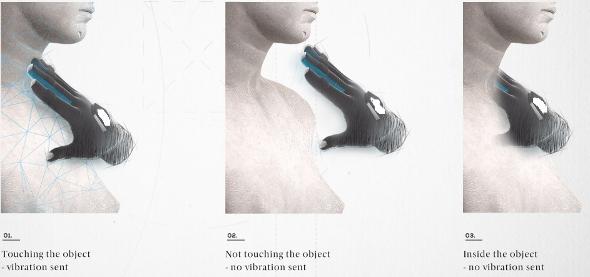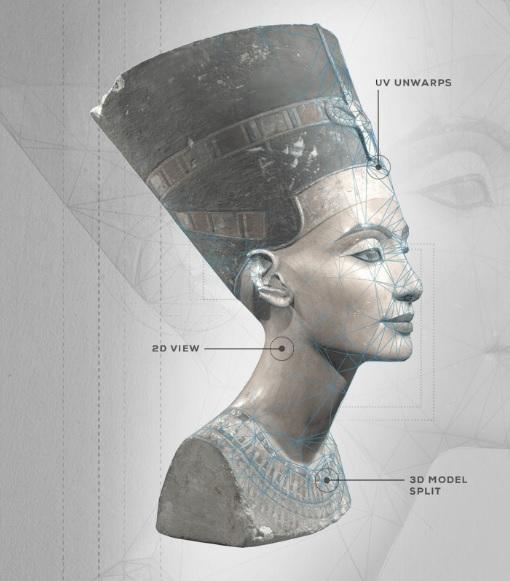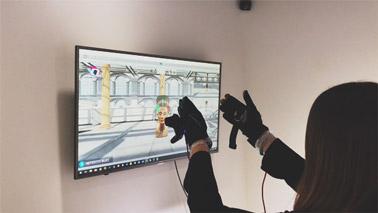Internationale Partnersuche
Innovation & Technologie Angebot
Virtual Reality based technology for the blind and visually impaired people
Country of Origin: Spain
Reference Number: TOES20180727001
Publication Date: 9 August 2018
Summary
A Spanish SME, active in virtual reality and smart wearables areas, has developed an innovative virtual reality kit experience for the blind and visually impaired–not with a headset,but with a pair of smart gloves.It makes possible that the blind can ‘see’ the shape of the 3D virtual object by following the vibrations received through the gloves.They're interested in commercial agreements with technical assistance with final users or technical cooperation for joint exploitation and dissemination
Description
A Spanish start-up, active in the area of virtual reality and smart wearables, has developed a novel virtual reality kit for the blind and visually impaired. This kit includes a pair of smart gloves.
This technology can create 3D models for blind people, to let them experience the masterpieces in their full majesty.
3D models are modified via laser scans of the original masterpieces by developing unique UV unwraps and re-topology, adding necessary extra levels of texture to create a real tactile experience.
To further improve the experience for the blind, the 3D models are split into several main pieces (e.g. hat, face, neck, body). Afterwards, the sculpture’s minor regions are added for life-like accuracy. In doing so, the visually impaired can finally touch and feel every detail of each masterpiece.
Additionally, a projection system enabled the 3D models to transform into a 2D "relief map". This allows the audience to scan features of the surfaces without the need to trace the 3D object borders.
How it works
01. Set-up
When the virtual hand touches the 3D object, the technology identifies it and sends feedback to the gloves in the form of vibration.
02. Experience
The blind person can see the 3D digital object with his/her own hands, identifing its volume, shape and surface texture just following the vibrations they receive through the gloves.
The object is in a virtual space and the blind person can explore and recognize global or even small details of the digital object.
The Spanish SME is interested in several type of partnerships. These ones will be negotiatied according to the interest:
- Commercial agreements with tecnical assistance are sought with museums, cultural heritage managers, foundations, investors or technological companies connected to cultural heritage activities.
- Technical cooperation is sought with technology resellers or business developers in terms of joint exploitation and upgrade of the technology as well as dissemination.





Advantages and Innovations
Advantages
- Free downloads of 3D models with haptic maps.
- The "touching" experience can be set up anywhere in the world.
- It makes visual art finally inclusive for the blind and visually impaired people.
Innovations
Currently there are some types of museums for blind people where they can touch physical models of artwork, but as conventional spaces they are limited for many reasons (a limited number of pieces for exhibition, a concrete location, a concrete timetable... Thanks to this technology:
- Unlimited items to be virtually "touched".
- Smart Gloves to touch and feel every detail of each masterpiece. The blind person can controls the virtual hand in virtual space of 360º via these smart gloves.
- Advanced virtual "feeling" depending on the texture and shape of the virtual object, different vibrations are sent. Keeping in mind that blind and visually impaired people see by touch, haptic feedback is configured to let them decide which vibrotactile actuators they want to use. In other words, letting them switch between their way of seeing – with either the finger tips, palms or hand, making the experience truly immersive for them all.
Stage Of Development
Already on the market
Stage Of Development Comment
This technology has been successfully used in a specific project to present some of the most iconic sculptural masterpieces in a digital world - for the blind people.
Requested partner
Type of partners sought: museums, cultural heritage managers, foundations or technological companies connected to cultural heritage activities.
Role of partners: Interested partners should provide their specific needs for the right implementation of the technology via commercial agreement with technical assistance. The Spanish SME would provide technical assistance for a better identification of needs as well as technical support once the technology is implemented.
Technical cooperation with technology resellers or business developers are also sought for joint exploitation of the technology. They will collaborate in terms of dissemination of the technology as well as joint projects for upgrading or significant improvements.
Cooperation offer ist closed for requests

